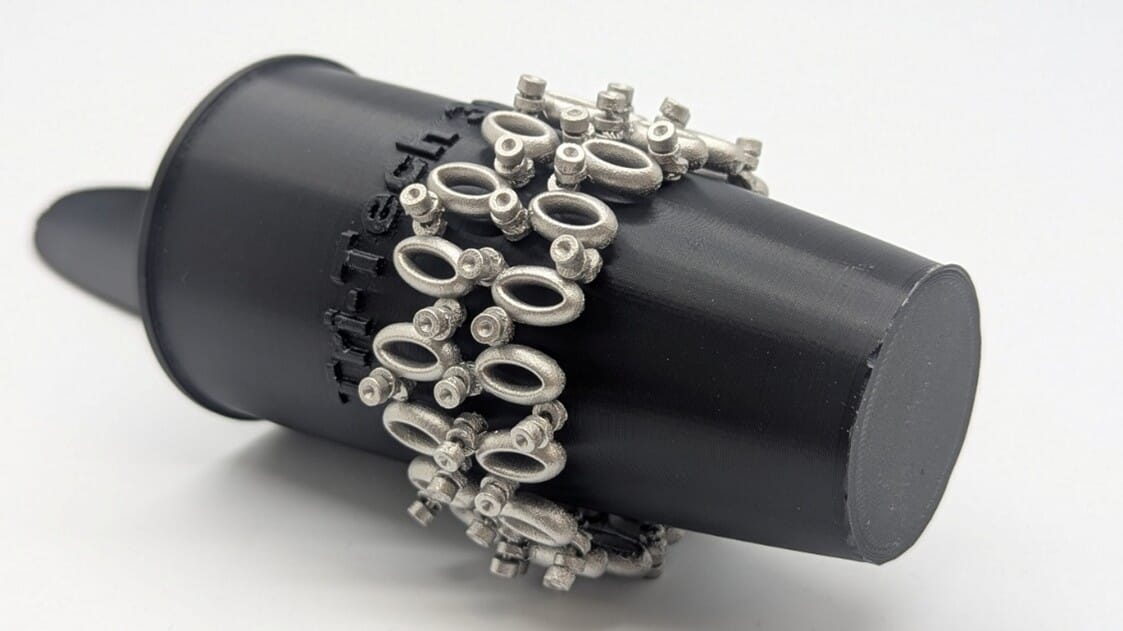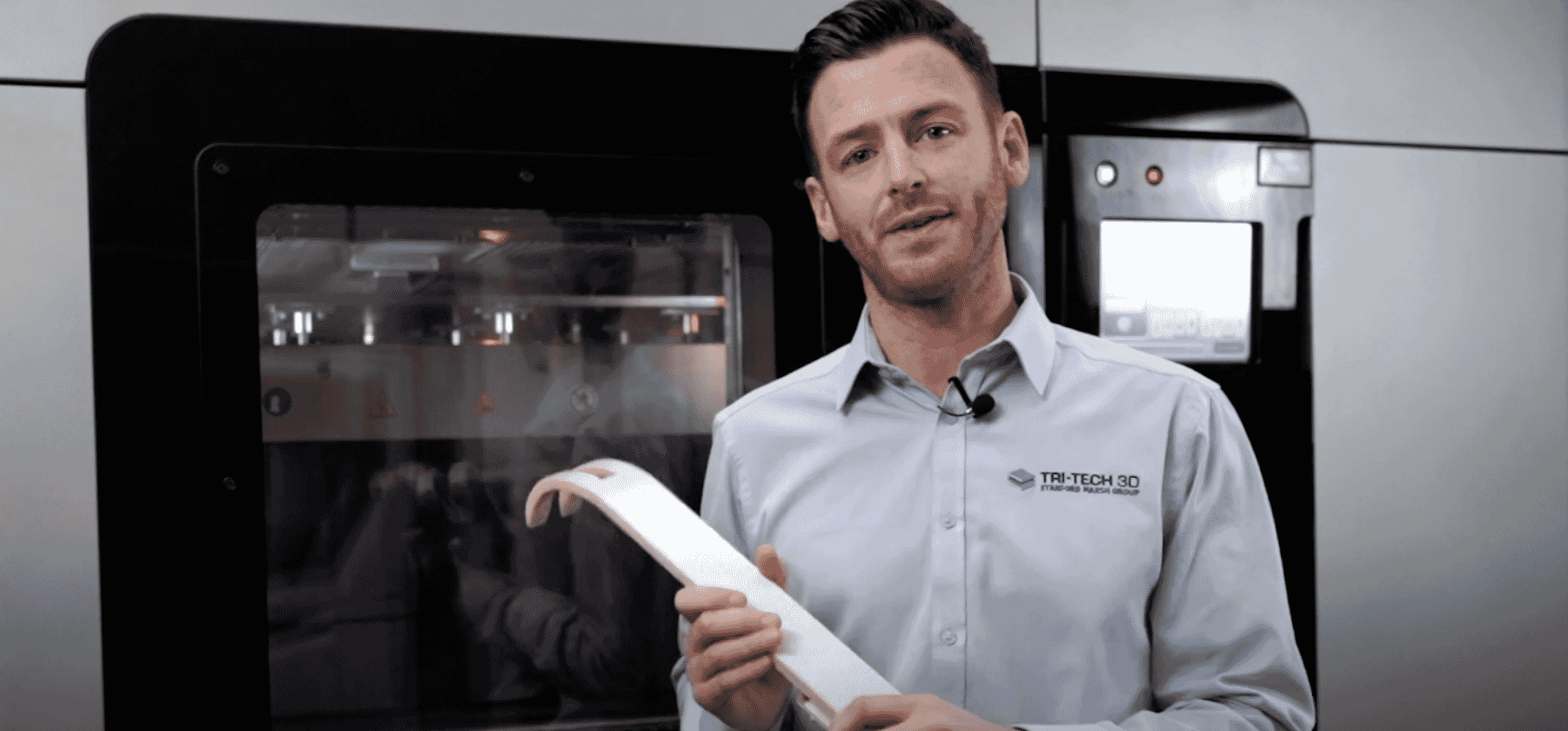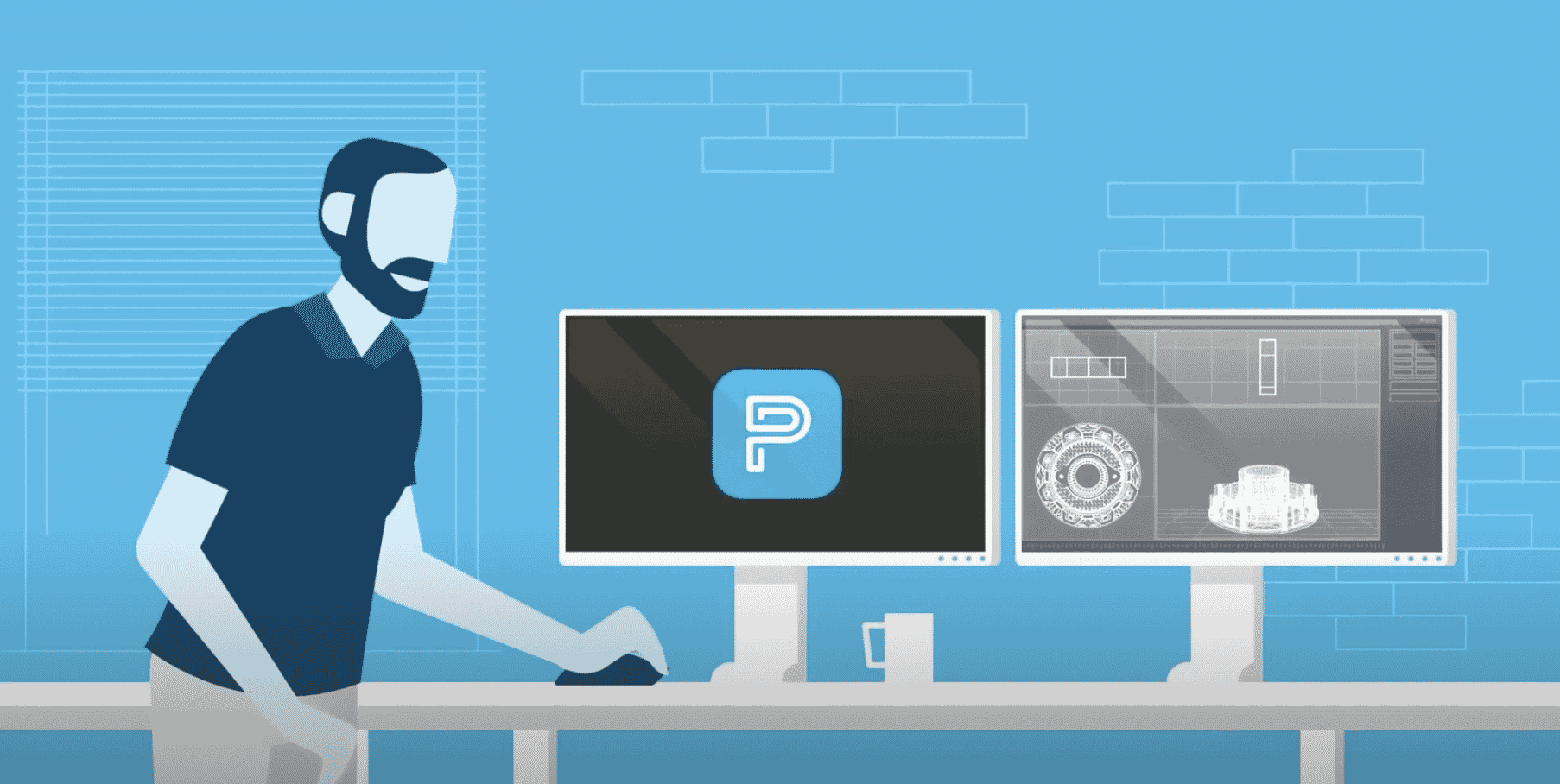Snowballing from a handful of early adopters in the 1980s, 3D printing is now an established presence across the gamut of global industry. From meeting the ultra-demanding specs of the aerospace and automotive sectors, to leading the charge for patient-specific medical components, additive manufacturing has made its mark in a thousand different applications.
But which industries use 3D printing in 2024? Read on to discover how industrial 3D printing has transformed five key sectors – then explore our case studies to see how the experts at Tri-Tech 3D could help your business harness the power of AM.
3D printing in construction industry
With research predicting that the global 3D printing construction market will be worth $519 billion by 2032, the day is surely coming when bricks-and-mortar will be entirely AM-generated (just read this recent news story about a Texas town where eco-friendly houses were 3D printed from a virtually zero-carbon cement mix).
In fact, AM is already present at every stage of the process, from the architects using hardware like the Stratasys J850 to generate ultra-realistic physical models of the proposed build, to the construction experts relying on concrete or polyamide powder to guarantee the stability of their design. More generally, unlike the prefab parts produced via conventional manufacturing, 3D printed components can be tailored to a given project with customised features, while producing parts on demand from an onsite print lab slashes transportation, delays, waste and cost.
3D printing in aerospace industry
The forward-thinking aerospace industry was amongst the first to adopt AM in the late-’80s, and that relationship has only grown closer. As ever, the keyword is ‘weight’ (or lack of it), with the countless materials now available for 3D printing allowing engineers to shave vital mass off componentry (from turbines to rocket nozzles), thereby saving fuel without compromising stringent safety regulations.
Take a flight on a modern Airbus passenger jet and you’ll note that the interior cabin panels are AM-generated. If you were ever lucky enough to visit the International Space Station, meanwhile, you’d find a fully functioning print lab that recently took delivery of its first metal 3D printer, enabling astronauts to be entirely self-sufficient rather than rely on spares transported from Earth.
3D printing in automotive industry
With a recent SmarTech report projecting that revenues related to AM automotive parts production will hit $5.8 billion by next year, it’s fair to say that 3D printing is firmly embedded in the sector. Major brands including Porsche, Ford and McLaren have employed AM processes like Fused Deposition Modelling and Selective Laser Sintering to generate and refine custom components at pace – before trialling prototypes in real-world conditions and instantly reacting to the feedback.
In modern times, the applications of 3D printing in the automotive industry are endless, from Porsche slashing 10% from the weight of its 911 GT2 RS pistons to McLaren futureproofing its production process with a fleet of five Neo800 3D printers. Not to be outdone, Ford recently opened a dedicated AM centre in Cologne, where twelve 3D printers will create tools and fixtures for electric vehicle production.
3D printing in defence industry
The nature of warfare is on the march, and Tri-Tech 3D has been regularly called upon by organisations spanning from national armies to private contractors to supply not only Stratasys 3D printers but also materials, software, training and expertise. While the applications of AM in defence vary enormously – from components in satellite antennae arrays to custom parts in remote-controlled bomb disposal vehicles – we find the speed of Fused Deposition Modelling (FDM) printers like the Fortus 900mc and Fortus 450mc make these Stratasys models highly effective choices for this uniquely high-pressure environment.
3D printing in medical industry
Motorsport and space travel make bigger headlines, but in terms of impacting our everyday lives, arguably the most important quantum leaps in AM have taken place in the medical sector. Aside from the generic benefits of cost and efficiency that apply to all sectors using AM, the key departure is the ability to rapidly produce patient-specific treatments using 3D printing.
Powered by Stratasys hardware like the Origin One Dental, J5 Medijet and J850 Digital Anatomy Printer, AM has produced tailored prosthetics, dental implants, knee and hip replacements, heart valves and more. Remarkably, even functional 3D printed hearts, kidneys, livers and other organs are now feasible, while industry thought-leaders also anticipate a day when prescription drugs will be printed to the exact size, shape and dosage required by the patient.
Contact Tri-Tech 3D to boost your industrial 3D printing capabilities
Long-established as the UK’s most respected voice in AM and related technologies, Tri-Tech 3D can guide your business to full 3D printing capability. Trust our expert team to lead you through our comprehensive range of Stratasys 3D printers, while advising on the best materials, software and 3D printer training for an all-in-one AM solution.
To learn more about industrial 3D printing, simply get in touch with the Tri-Tech 3D team. We’re ready to help you on 01782 814551 or info@tritech3d.co.uk

















